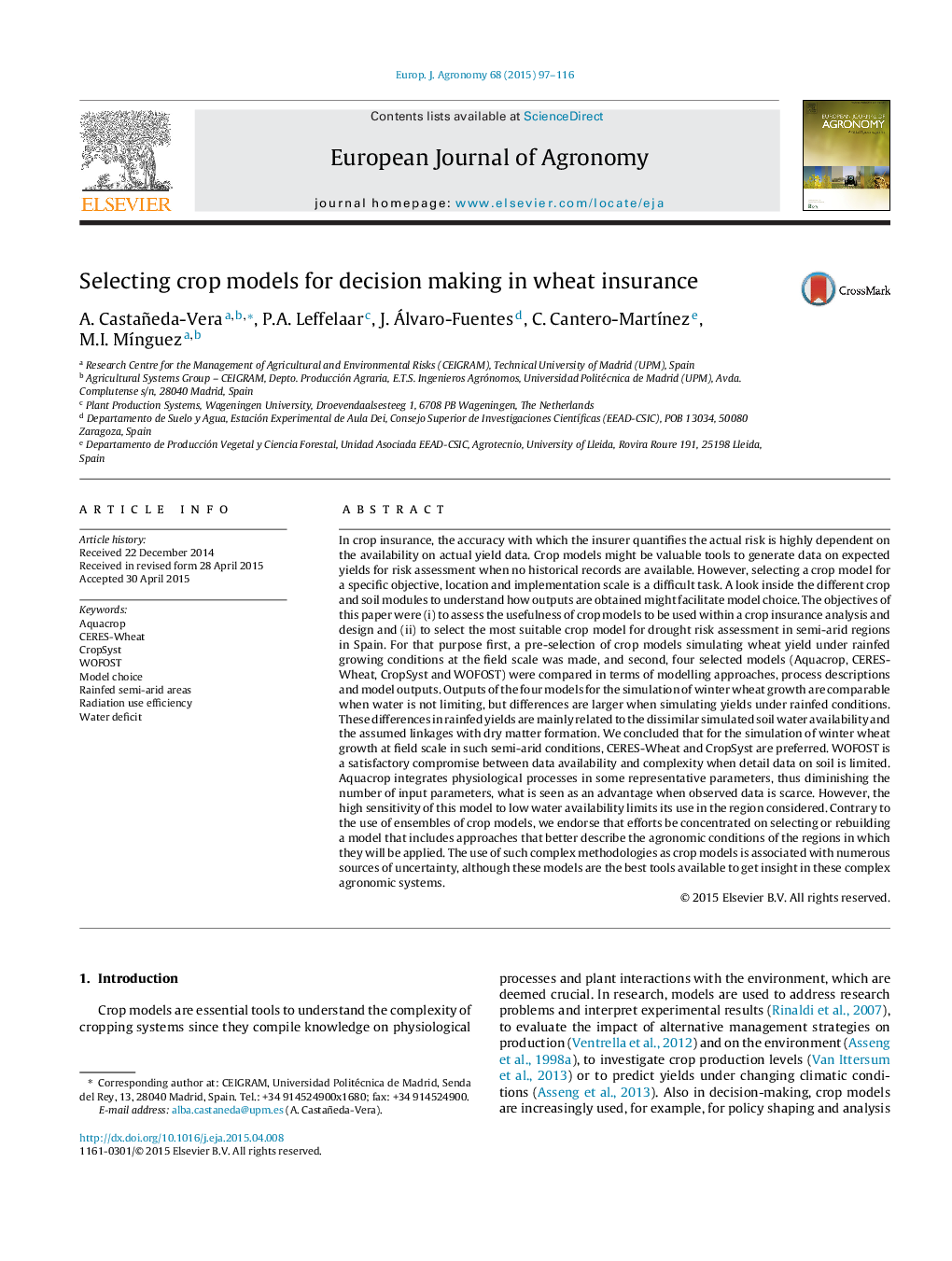| کد مقاله | کد نشریه | سال انتشار | مقاله انگلیسی | نسخه تمام متن |
|---|---|---|---|---|
| 6374276 | 1624457 | 2015 | 20 صفحه PDF | دانلود رایگان |
عنوان انگلیسی مقاله ISI
Selecting crop models for decision making in wheat insurance
ترجمه فارسی عنوان
انتخاب مدل محصول برای تصمیم گیری در بیمه گندم
دانلود مقاله + سفارش ترجمه
دانلود مقاله ISI انگلیسی
رایگان برای ایرانیان
کلمات کلیدی
موضوعات مرتبط
علوم زیستی و بیوفناوری
علوم کشاورزی و بیولوژیک
علوم زراعت و اصلاح نباتات
چکیده انگلیسی
In crop insurance, the accuracy with which the insurer quantifies the actual risk is highly dependent on the availability on actual yield data. Crop models might be valuable tools to generate data on expected yields for risk assessment when no historical records are available. However, selecting a crop model for a specific objective, location and implementation scale is a difficult task. A look inside the different crop and soil modules to understand how outputs are obtained might facilitate model choice. The objectives of this paper were (i) to assess the usefulness of crop models to be used within a crop insurance analysis and design and (ii) to select the most suitable crop model for drought risk assessment in semi-arid regions in Spain. For that purpose first, a pre-selection of crop models simulating wheat yield under rainfed growing conditions at the field scale was made, and second, four selected models (Aquacrop, CERES-Wheat, CropSyst and WOFOST) were compared in terms of modelling approaches, process descriptions and model outputs. Outputs of the four models for the simulation of winter wheat growth are comparable when water is not limiting, but differences are larger when simulating yields under rainfed conditions. These differences in rainfed yields are mainly related to the dissimilar simulated soil water availability and the assumed linkages with dry matter formation. We concluded that for the simulation of winter wheat growth at field scale in such semi-arid conditions, CERES-Wheat and CropSyst are preferred. WOFOST is a satisfactory compromise between data availability and complexity when detail data on soil is limited. Aquacrop integrates physiological processes in some representative parameters, thus diminishing the number of input parameters, what is seen as an advantage when observed data is scarce. However, the high sensitivity of this model to low water availability limits its use in the region considered. Contrary to the use of ensembles of crop models, we endorse that efforts be concentrated on selecting or rebuilding a model that includes approaches that better describe the agronomic conditions of the regions in which they will be applied. The use of such complex methodologies as crop models is associated with numerous sources of uncertainty, although these models are the best tools available to get insight in these complex agronomic systems.
ناشر
Database: Elsevier - ScienceDirect (ساینس دایرکت)
Journal: European Journal of Agronomy - Volume 68, August 2015, Pages 97-116
Journal: European Journal of Agronomy - Volume 68, August 2015, Pages 97-116
نویسندگان
A. Castañeda-Vera, P.A. Leffelaar, J. Álvaro-Fuentes, C. Cantero-MartÃnez, M.I. MÃnguez,
